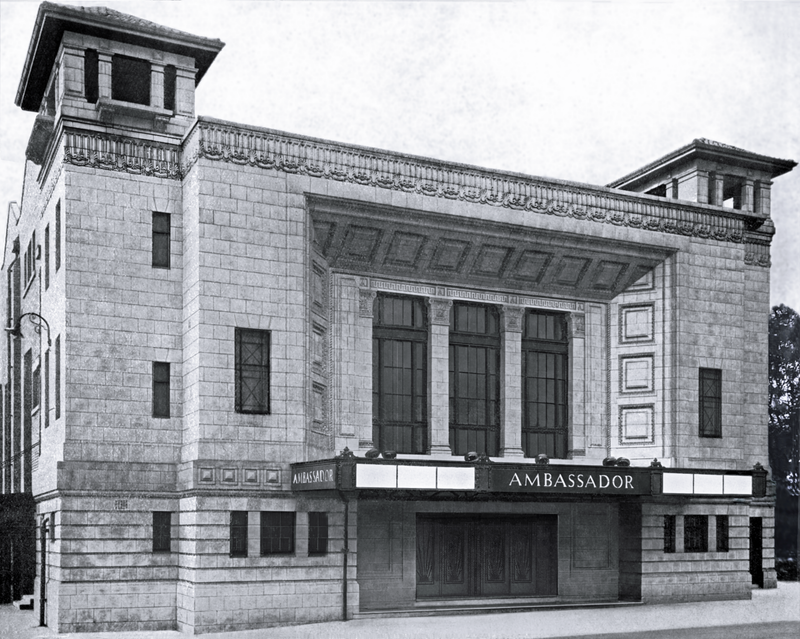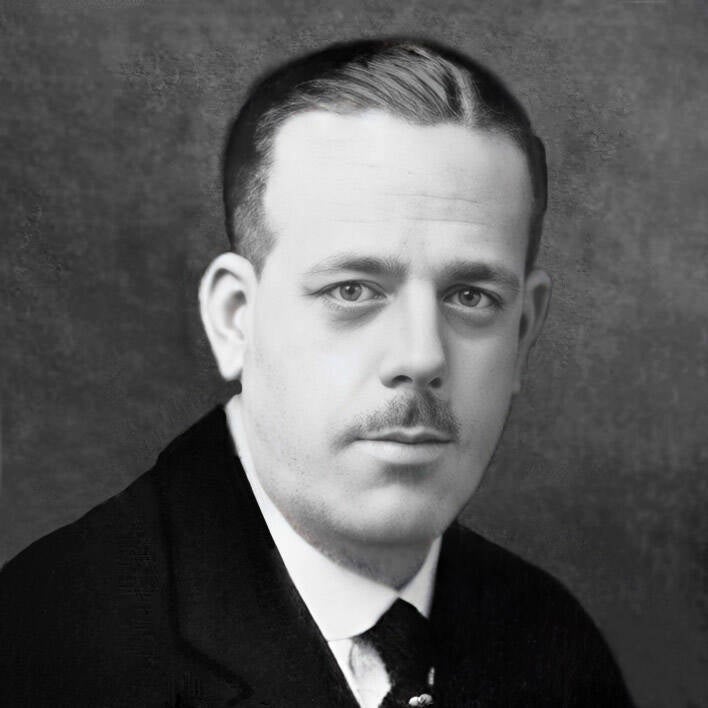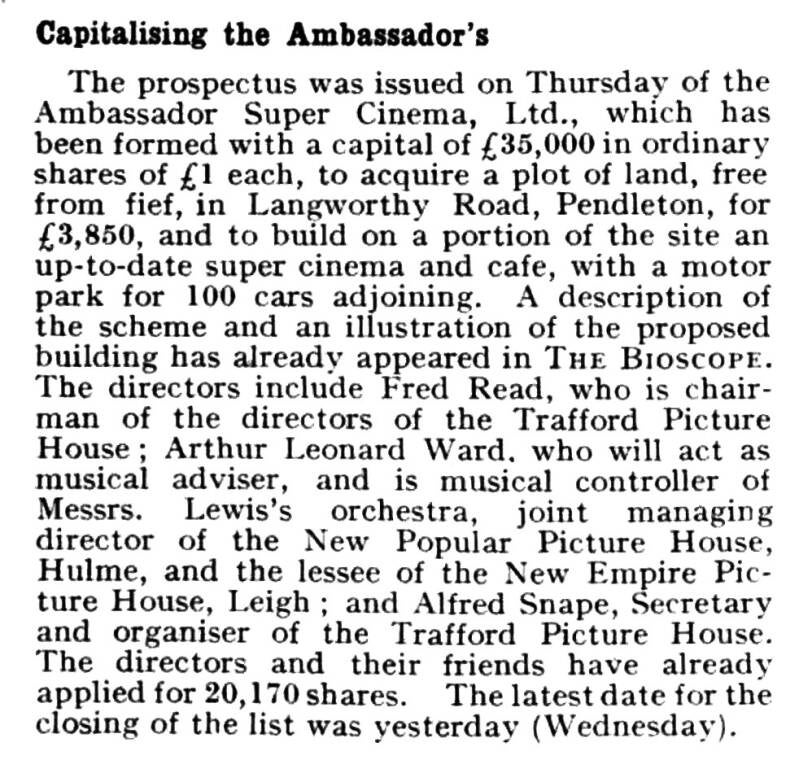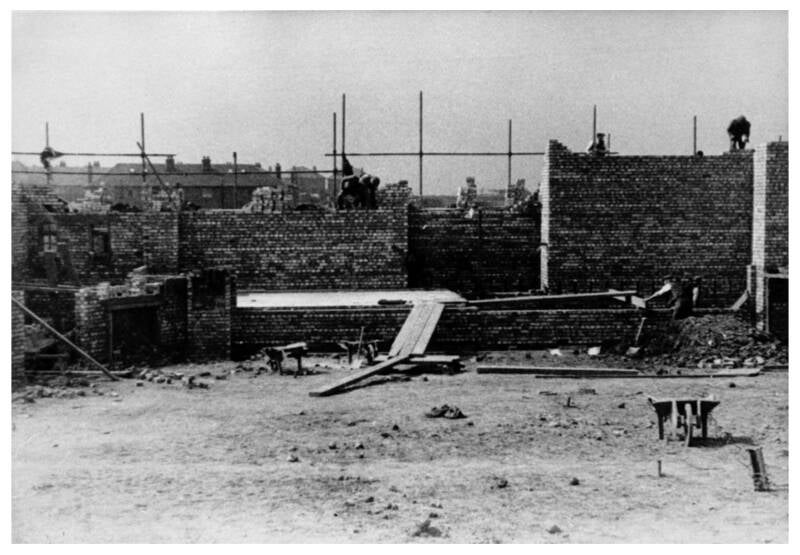History of the Ambassador - Part One

From Conception to Opening Night
The Ambassador's concept was to create a 'Super Cinema'—a venue that could host live theatre variety shows in addition to showing films. Up until that point, cinemas were generally smaller, often converted from public halls or other buildings. Even purpose-built cinemas were typically single-story setups.
Conceived during the height of silent films, the owners aimed to ensure the venue would be future proofed against any changes in the popularity of moving pictures. The Ambassador became the first of these purpose-built cine-variety theatres to be constructed outside of London.

September 1927 - A Meeting of Minds
The partnership of Read, Snape, and Ward began around 1926 when Alfred Snape, who had entered the cinema business as Secretary and organiser for Trafford Picture House Ltd., joined forces with Councillor Frederick Read, Chairman of Trafford Picture House Ltd., and Arthur Ward, a Musical Director and cinema owner. Together, they formed the Ambassador Cinema Circuit, with Fred Read heading the board as Chairman and Managing Director.
By early 1927, the directors had engaged local architect John Knight to design their new style of cinema. A special feature, according to reports at the time, was to be the "Cabaret Café Rendezvous," situated on the first floor beneath the upper circle balcony. The café would seat 200 guests and accommodate 100 for dancing on cabaret nights.
The estimated cost for the theatre, which would accommodate 1,820 people, was £34,000. However, due to an accident that necessitated new steelworks, the final cost rose to £40,000.
(Note: £40,000 would be the equivelent of £3,211,280 in 2025.)
On October 15th, a new company, Ambassador Super Cinema Ltd., was registered. Financial advice at the time suggested that cinema circuit owners register a separate company for each cinema to limit liability. This company remained active throughout the three different ownerships during its time as a cinema and theatre. It wasn’t until Tuesday, 15th March 1966—two years after the cinema was sold to Mecca—that the company was finally liquidated.
October 1927 - A Heroic Rescue attaempt ends in two deaths
In October 1927, tragedy struck during the initial site preparation for the Ambassador Super Cinema when workers John Gannon and John Gregg succumbed to poisonous gases in a 25ft shaft excavated into an old cinder tip. Gannon collapsed first upon descending, prompting Gregg's heroic rescue attempt, during which he too was overcome while clasping his colleague. Despite valiant efforts by fellow workers and authorities, both men died at the scene. The inquest commended Gregg's selflessness, ruled the deaths as misadventure without employer negligence, and highlighted the need for better safety measures; the cinema later donated its opening night proceeds to their families, and Gregg was honored posthumously by the Carnegie Hero Fund. For the full story and tributes, explore THE TRAGIC DEATHS OF JOHN GANNON & JOHN GREGG in our The People section.
November 1927 - Raising the Money
On Thursday, November 3rd, a prospectus was issued for Ambassador Super Cinema Ltd., part of the new Ambassador Cinema Circuit. This prospectus was financed with a capital of £35,000 in ordinary shares of £1 each. The purpose was to acquire a plot of land on Langworthy Road, Pendleton, for £3,850, and to construct a modern super cinema and café, with a motor park for 100 cars adjoining the site.
The article from The Bioscope suggests that the shares had already been allocated between the three main directors and their firends.
In addition to the main three directors Read, Snape and Ward, other directors included William Henry While from Salford, Stanley Henry Baker from Knutsford, and Albert Edward Wright from Manchester.
Among the early shareholders was Percy Hamer from Swinton, whose construction firm was later awarded the contract to build the Ambassador cinema. Although he initially only held shares in the company, Percy Hamer did not officially join the board as a director until 1936. This occurred after Arthur Ward, one of the original directors, passed away, when Hamer took his place.
(Note: This information appears slightly out of sync with the timeline, but are the dates as reported in the Bioscope at the time.)
December 1927 – Tenders invited for the building work
“Manchester.—Tenders are being invited for the erection of the new Ambassador Cinema at Pendleton, Manchester, for the Ambassador Super Cinema Ltd., of 13 St. Ann's Street, Manchester. The new kinema has been planned by John Knight, F.R.I.B.A., of 5 Cross Street, Manchester. The site is in Langworthy Road, Pendleton, and it will have a capacity of 1,820 persons.” — Kinematograph Weekly, Thursday 22 December 1927.
Swinton-based P. (Percy) Hamer Ltd., known for constructing many public buildings, including several cinemas, won the tender to build the Ambassador.
July 1928 - Accident Causes Delay
In July 1928, damage costing about £4,000 occurred when one of the main roof girders was being hoisted into position, and the steel hawser (rope) snapped. The falling girder struck three others already in place, causing them to crash to the ground. Part of the newly erected exterior wall was also damaged, leading to a postponement of the planned opening in early December as new girders had to be manufactured.
August 1928 – Back on track
In August 1928, everything appeared to be back on track according to a report in the trade paper, The Bioscope, on Wednesday, August 1st, 1928: “Ambassador Super Cinema, Manchester. The whole of the steelwork for the Ambassador Super Cinema, Pendleton, Manchester, will be delivered and erected within the next three weeks, by which time the steelwork contract will be completed. Alfred Snape states that "the theatre will open in December according to plan.”
Images from NWFA showing building work on the site.

December 1928 - Kinematograph preview
On Thursday 27 December 1928, the Kinematograph Weekly described the Ambassador as an architectural and engineering marvel, that represented the pinnacle of 1920s cinema design—combining technical innovation, architectural beauty, and a forward-thinking approach to entertainment.
THE AMBASSADOR, PENDLETON.
INTERESTING NEW LANCS HALL
2,000-Seater Opened
THE building of the Ambassador, Pendleton, which was opened on Saturday, involved an engineering feat which has excited the interest of both the practical man and the technician.
Owing to the nature of the site, the architect, John Knight, F.R.I.B.A., found it necessary to build directly on a reinforced concrete raft, which is itself supported by no less than 120 huge columns of concrete which rest on the solid rock, a work of enormous importance. but of course, never to be appreciated by the public.
Imposing Facade
It is, however, the superstructure which really delights and pleases. "Imposing" is the appropriate word to use regarding the external aspect. The main façade, which is Greek in character, disposing to the Modernist influence, has been carried out in light terra-cotta, so that if dignified and beautiful by day, it is naturally adapted for scientific flood-lighting, and, when illuminated, presents a most arresting and inviting appearance.
It is evident from the treatment of the interior that, from the architectural standpoint, every effort has been made to secure the ideal.
With its 2,000 capacity, spacious crush rooms and café and car park with accommodation for 200 cars, the Ambassador is conceived upon lines and with an eye to beauty and comfort that characterises the most recent examples of the super kinemas in the country. On the stalls floor, the seating capacity is 1.820 and the balcony accommodates 580.
For the comfort of the auditorium patrons there is a draught screen at the back, made of wood and plate glass. The general decorations are unique in their simplicity and effectiveness. The ivory tinted walls, with dados executed in glass tiles, form a pleasing background to the heraldic emblems which are hung from the frieze, whilst they contrast most fittingly with the elaborate brass grilles in the Italian style to the organ chambers. The proscenium frame is treated in a delightful and artistic manner.
When the Ambassador has been open about three months, it has been arranged for much of the painted portion of the walls to be covered with oak panelling. This cannot be done at this stage in a new building efficiently, but eventually, there will be an improvement in this connection.
The Garden Scene
In a wonderfully attractive entrance hall, amongst other novelties, is an electrically-lit garden scene, which will be varied from time to time. Occasionally the space will be used for advertising forthcoming film programmes, and special settings will be made that will both charm and interest.
Stage Facilities
There is a good-sized stage with adequate dressing-room accommodation, provision being made for the introduction of other forms of entertainment. The stage equipment is very complete, and has been supplied by the Holophane company, who have also installed one of their special curtains, designed for colour lighting purposes.
A large Unit organ has been installed. It has hundreds of notes and effects, which include piccolo, clarinet, Westminster chimes (18 notes), flute, viola, saxophone, tambourine, drums, castanets, trombone, tom-tom, Chinese block, vox humana, cymbal, snare drum, surf effect, sleigh bells, triangle, horses' hoofs, thunder, motor horn, boat syren, crash cymbal, fire gong, aeroplane, wind howling, telephone, train whistle, birds and scores of other delightful and surprising novelties.
The Directors
Those associated with the Ambassador include Fred Read (chairman), A. Snape (secretary of the Trafford Picture House, Ltd.), A. L. Ward, well known in Manchester musical circles, who is joint managing director of the New Popular P.H., Hulme, and lessee of the New Empire, Leigh, Lancs, and under the guidance of these showmen, the finest film entertainment with its collateral musical and stage presentation is assured to the patrons of Pendleton."

December 1928 - Christmas Eve Gala Opening
This reinterpretation of architect John Knight's original watercolour painting captures the grandeur of the Ambassador Super Cinema as it might have appeared on its opening night. Knight's artwork, with its classical proportions and elegant design, highlighted the theatre's imposing facade, illuminated by soft floodlighting that would have added a magical glow.
The excitement surrounding the opening of the Ambassador, including its grand inauguration by Salford's Mayor, took center-stage in the local newspapers. The Ambassador represented the pinnacle of luxury for Salford at the time, a cinema of unparalleled grandeur truly worthy of the title “Picture Palace.” With marble staircases, sumptuous fixtures, ornate decorations, and deep-pile carpeting, ordinary people could escape their dull daily lives and be transported to other worlds.
On Christmas Eve, Salford's newest cinema, the Ambassador Super Cinema, opened its doors in one of the city's most coveted suburban locations. The Mayor of Salford, Councillor A. H. Collins, enthusiastically declared, “I am delighted! Salford has played second fiddle to Manchester for too long. We now have a cinema comparable to any in Manchester!”
Facsimile copy of the original Souvenir Programme From the grand opening on Christmas Eve, December 24th 1928.
The evening’s three-hour entertainment programme featured two films: "Vaudeville," starring Emil Jannings and Lya De Putti (original title: Varieté 1925), and the feature film "Enemies of Society," starring Conway Teal and Margaret Morris. Before the film screenings, there was an impressive demonstration of the latest 'Holophane' novelty stage lighting effects.
Musical performances were delivered by John Hughes and Madame Edna Melling, accompanied by the grandly titled Ambassador Symphony Orchestra, which boasted not just one but two grand pianos (a Brinsmead and a Steinway), under the skilled direction of Mr. Arthur L. Ward, one of the three main directors of the cinema.
During the intermission and organ interlude, patrons were captivated by the performances of organists Mr. Norman Cocker and Mr. Reginald Liversidge, who skilfully played a selection of both popular and classical music on the "Rex Gloria" cinema organ.”
All proceeds from the opening gala were donated to the dependents of the two men, John Gannon and John Gregg, who tragically lost their lives during the excavation of the cinema's foundations.
It was reported in the Manchester Evening News - Tuesday 05 March 1929, "Dependents of the two men killed during the erection of the Ambassador Cinema Pendleton shared £112 1s*., which was raised by a benefit performance at the cinema."
* This would be worth the equivalent of £8,128 in today’s money. The average weekly pay for a building labourer in 1929 was around 11 shillings and 6 pence, (worth £44.93 today).
Based on detailed descriptions and several photographs of its almost identical sister, the Kingsway Super Cinema, this mock-up offers a visual representation of what the Ambassador's proscenium would have looked like on its opening night.
It closely mirrors the original design and ambience, capturing the grandeur and architectural style of that era. This recreation aims to give a sense of the theatre's rich history, and the atmosphere experienced by audiences during its early days.

The first-ever film shown in the Ambassador
Modern-day trailer for Vaudeville - Original title: Varieté, a German film from 1925 starring Emil Jannings and Lya De Putti
You can watch the full film >Here<
References
- Carnegie Hero Fund Trust. (n.d.). Heroism award certificate to John Gregg’s widow. Carnegie Hero Fund Records.
- Gerrard and Sons Ltd. (1927). Site preparation and safety reports related to the Ambassador Cinema construction [Company records].
- Kinematograph Weekly. (1927, December 22). Tenders invited for the building work of Ambassador Cinema, Pendleton.
- Kinematograph Weekly. (1928, December 27). The Ambassador, Pendleton: Architectural and engineering marvel.
- Knight, J. (1927). Architectural plans and watercolour painting of the Ambassador Super Cinema [Unpublished architectural documents]. John Knight Architectural Archives.
- Manchester Evening News. (1928, December 19). Advert for the new cinema. Manchester Evening News.
- Manchester Evening News. (1929, March 5). Benefit for dependents of workers killed during Ambassador Cinema construction.
- North West Film Archive. (1928). Photographic documentation of building works at the Ambassador Cinema site [Photographs].
- Snape, A., Read, F., & Ward, A. L. (1926–1928). Correspondence and company formation documents for Ambassador Super Cinema Ltd. Trafford Picture House Ltd. Archives.
- The Bioscope. (1927, November 3). Ambassador Super Cinema Ltd. prospectus and company details. The Bioscope.

Learn more about the men behind the creation, and ownership of the Ambassador Super Cinema by clicking the buttons below
© 2023 - 2025 The Ambassador Super Cinema Salford - All rights reserved.





















Create Your Own Website With Webador